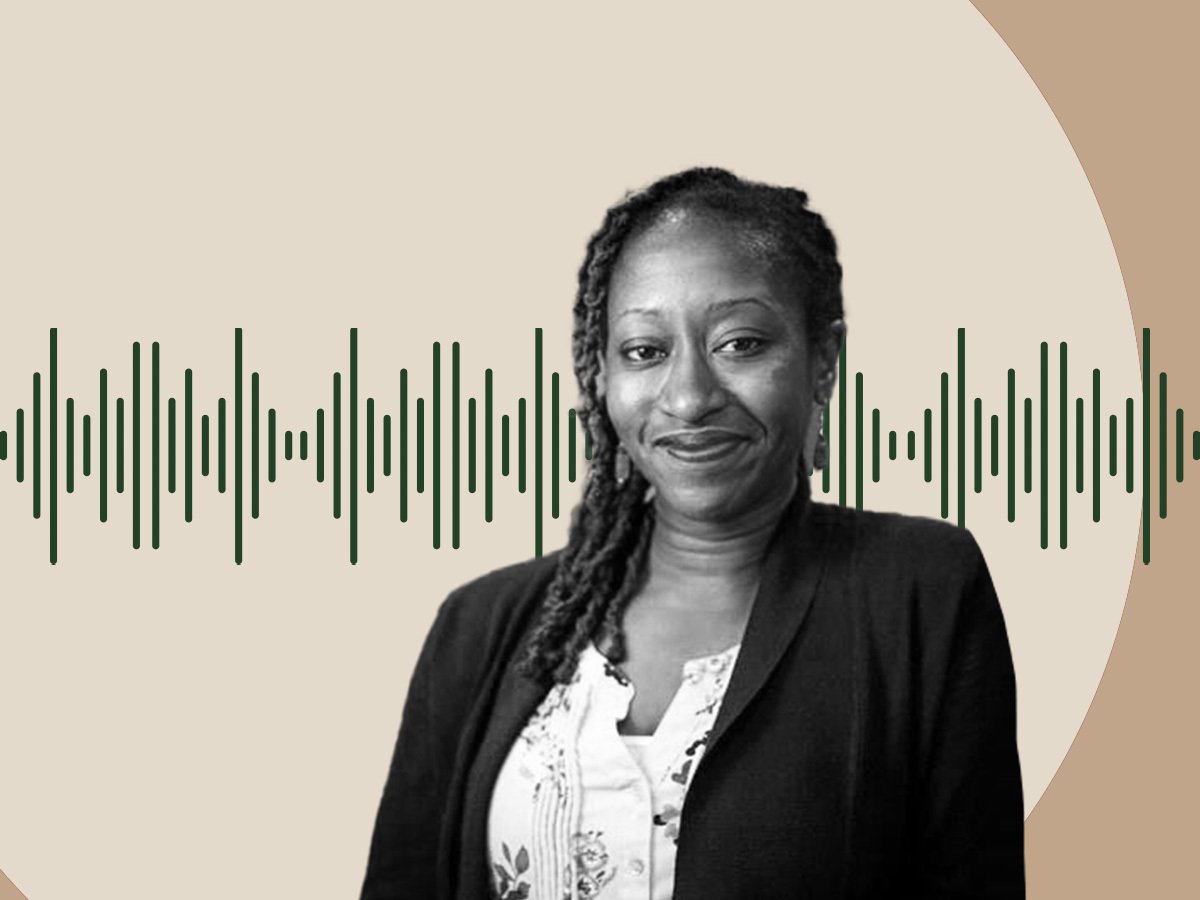
Dr. Elizabeth Cherot is the senior vice president and chief medical and health officer of the March of Dimes, the leading nonprofit in the United States working to improve maternal and infant health, first founded by President Franklin D. Roosevelt in 1938.
Cherot is a Fellow of the American College of Obstetricians and Gynecologists. She recently served as the chief medical officer for Axia Women’s Health. At the March of Dimes, she leads the Office of Maternal and Child Health Impact and is the nonprofit’s key physician.
In August, the March of Dimes expects to release its annual report illuminating those counties in the United States with little to no prenatal and birth care. Called maternity care deserts, 36 percent of counties in the United States had no birth centers, obstetric hospitals, or obstetric providers in 2022—and the problem is growing.
NPQ spoke with Cherot about maternity care deserts, and innovative ways to bring care to the families who need it most.
This interview has been lightly edited for length and clarity.
NPQ: Could we start with the key findings in the March of Dimes’ most recent report on maternity care?
Dr. Elizabeth Cherot: The March of Dimes does funding along with research. We’re one of the nation’s oldest nonprofits really looking at health data and program data, trying to get to the current state of the maternal and child health crisis in this country. That work helps inform research and policy.
“We’re watching hospitals close across the country and patients having to really navigate how to get to providers.”
I’ll speak quickly about our preterm birth report card. We have a big report card that comes out in, I believe, November. As a provider for 30 years, this is one that I leaned on. It measures our infant mortality in addition to the social drivers of health, C-section births, and inadequate prenatal care. It comes up with a scorecard and providers use that quite readily.…Our preterm birth rate is kind of atrocious in this country. It’s really not improved since 2007.…Meanwhile, we have a maternity care desert report we’ve been doing since 2018, and that’s highlighting areas of inequitable access to maternity care providers and birthing facilities.
In 2022, we did all counties across the US showing the access to care and the continuing decline. Our latest report is coming out August 1st, and that report is titled “Where You Live Matters” because it looks across maternity care in the 50 states and Puerto Rico, and it’s our most comprehensive report to date. We’re looking at the distance to care, the availability of family planning services, community-level factors like housing conditions, poverty, and chronic health conditions, which I think highlights diabetes, hypertension. And then lastly, [it’s] about telehealth policy.
You will see in that report that things are worsening. We’re watching hospitals close across the country and patients having to really navigate how to get to providers and places for delivery. Inadequate access to care, we know, impacts outcomes.
NPQ: I was going to ask if maternity care deserts were increasing or decreasing. Why might they be increasing?
EC: I get asked this question quite a bit and some of the answers to that are: staffing at hospitals. That’s nursing and physician shortages. There’s been a decline going into obstetrics and gynecology.…We also think about hospitals that are actually closing. Why are they closed? The volumes can be low. Reimbursement is not good. A lot of these hospitals, the majority are Medicaid deliveries—some of the highest risk. The lowest reimbursed…[hospitals are] now serving [moms] the worst, as far as I’m concerned. If that’s the entry to the health care system, [but there is a] lack of access, it becomes: Why should I go for my postpartum visit (which we know is super important)? Why should I get my wellness visit for my kid? We’re turning down that entry point for families. And we know that nations are healthiest if their families are. It’s the foundation.
NPQ: What happens to parents and to infants who are born in maternity care deserts? Do they face worse health outcomes?
EC: If you don’t get prenatal care, your outcomes are worse. It helps moms and babies. It’s not just about preterm birth, but preeclampsia, eclampsia, diabetes.…If you show up with no prenatal care, you statistically have the worst outcomes.
Sign up for our free newsletters
Subscribe to NPQ's newsletters to have our top stories delivered directly to your inbox.
By signing up, you agree to our privacy policy and terms of use, and to receive messages from NPQ and our partners.
We know that moms don’t recover in six weeks and that extending care for the full year is super important. The March of Dimes educates. We do a lot of research, fund a lot of data and evaluation. We do education for both providers and patients, but we also do a ton of advocacy. We step in and help moms for policy change because this is to prioritize the health of moms and babies.…On a state level, it matters as some states fully cover you for a year. If you’ve had diabetes in your pregnancy, you can now manage it and make it better. Hypertension, same thing.
We know a lot of maternal deaths happen in that [first] year, not just in the [first] six weeks, from mental illness, from cardiovascular disease…also the in-hospital hemorrhage. We know that if we do both neonatal and postpartum care, we could prevent those deaths because 80 percent of those deaths are preventable.
NPQ: That also leads to something I wanted to ask, which is a broader question of how the March of Dimes addresses health disparities in maternal and infant health?
EC: We have an 85-year history. FDR asked all Americans to send in [money]—even if it was a dime—to solve for the polio vaccine. And we’ve been doing the same thing trying to fundraise. We work nationally and in our markets. We have boots on the ground, grassroots, doing the core work. We’ve got some really neat programs that we do too, like mobile units.
“What we are trying to do is have a safe place for patients to get seen.”
We are the convener. We’re not care providers, despite me being an OB-GYN. We bring providers together with funders, and those funders could be someone in a local market, or at a national level; [they] could be a partner as a payer, or a corporation, or simply a family sponsor. We’re raising dollars from people and massive dollars from corporations. So, bringing [funding] all together to take a mobile bus that we bring out. We go to Ohio and Appalachia.
NPQ: That’s where I’m from.
EC: We bring that bus to patients who need to be seen. The most marginalized of our country, if you will, people who are not seen.…We’re bringing care.…I think we’re a trusted name in the community because of the things we have done over the years. What we are trying to do is have a safe place for patients to get seen and to bring high quality care.
We have great sponsors that are helping us do ultrasounds, or sexually transmitted disease testing, or routine prenatal screening right where the patient is.…There are a lot of buses out there doing mobile units. Mammography is probably one of the most common. Blood drives are another and a lot are doing primary care, but only two percent of all mobile units do maternity care. We are on the forefront of that.
NPQ: What other programs are helping to fill the gap in care?
EC: We’re in NICUs, partnering with hospitals to take care of the patients that have already had the outcome: the preterm birth, the birth defect, or growth issues, or feeding issues. In the neonatal intensive care unit, we have a March of Dimes person there for family support.…Patients, most of them, were unaware that this was even a possibility, and now they are in the sickest of the hospital units. And we’re giving them the support, the education, providing them with connected care.
“Doulas are one of the many solutions to the health equity gap.”
We’re also doing a pilot program for mental health where we’re seeing dads and moms being evaluated. I think it’s over 79 neonatal intensive care units that we work in, and then we have a doula project. It’s a big partnership with CVS. Doulas are one of the many solutions to the health equity gap: getting women, especially Black and Brown women, support before they deliver, during labor, and after. Our program really looks at training, evaluating, and sustaining, making sure these women don’t burn out. This is a multiyear program.
And then the last is our fourth program, which is called the Innovation Fund. It’s a new way to advance our mission and provide value to moms. What we’ve done is create the Innovation Fund as a philanthropic venture capital fund. We have financial support and we’ve got experts both on our medical science committee, volunteers in the community who are academics….We’ve got an investor side, again volunteers who help us look through these investment choices.
We invest in these solutions which we hope to get faster into the hands of moms. Some of them are tech-based where you’re talking about variables for hypertension, for instance, that are not only for babies, but could be for moms for the future. We have another investment looking at fetal heart rate monitors, a specific one that looks at oxygenation, and thinking about trying to prevent some of those unwanted C-sections and those bad perinatal outcomes.…It is new for the March of Dimes to think about being a philanthropic venture capital fund. But the idea of that is to really fast track these solutions—and we’re not going to get every single one of them right. This is the first of many key investments we’ll do in our first fund. We hope that we will partner with some other individual donors that will really see this as an innovative way to improve the health of moms and babies.












